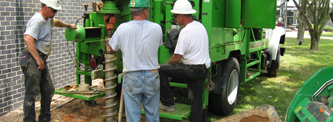

Phase II, Phase III Environmental Site Assessments, Contamination Assessments & Site Remediation
GAIA completes and designs comprehensive Phase II ESAs in accordance with the American Society for Testing and Materials (ASTM) Standard for Environmental Site Assessments: Phase II Environmental Site Assessment (ESA) Process, based on the outcome of a Phase I ESA report prepared for real estate transactions, property development, zoning, bank financing, refinancing, and foreclosures, and other in-house proactive audit programs, reported known conditions or at the request of the client. If a property requires further action to deal with documented contamination of the soil and/or groundwater, GAIA designs and implements appropriate actions via Phase III ESAs, often referred to as Remedial Action Plans (RAPs).
A Phase II Environmental Site Assessment is an investigation that collects original samples of soil, groundwater or building materials to analyze for quantitative values of various contaminants. This investigation is normally undertaken when a Phase I ESA determines a likelihood of site contamination. The most frequent substances tested are petroleum hydrocarbons, heavy metals, pesticides, solvents, asbestos and mold.
A Phase III Environmental Site Assessment is an investigation involving remediation of a site. Phase III investigations aim to delineate the physical extent of contamination based on recommendations made in Phase II assessments. Phase III investigations may involve intensive testing, sampling, and monitoring, “fate and transport” studies and other modeling, and the design of feasibility studies for remediation and remedial plans. This study normally involves assessment of alternative cleanup methods, costs and logistics. The associated reportage details the steps taken to perform site cleanup and the follow-up monitoring for residual contaminants.
Site Assessments are similar to Phase II ESAs in that they are conducted on sites that are suspected of potential contamination of the soil and groundwater based on evidence obtained in the course of reviewing the use and history of the Site.
Contamination Assessments are completed on those properties where known contamination exists, and follow the same basic principles of the Phase II ESA and SA, but with a more focused approach to delineate and determine the extent of the contamination by a specific set of compounds.
Site Remediation is the process of removing pollutants and contaminants from a plot of land. These pollutants can include many different types of hazardous waste that may be harmful to human health
or the environment. Site remediation may be aimed at cleaning up the soil, water bodies, groundwater, or air within a particular area.
There are a number of materials that can cause a site to require remediation, including by-products from manufacturing and industrial waste or high levels of chemical concentration from any number of sources. Site remediation is usually aimed at one of four basic types of pollutants, including toxic, flammable, explosive, or disease-causing substances.